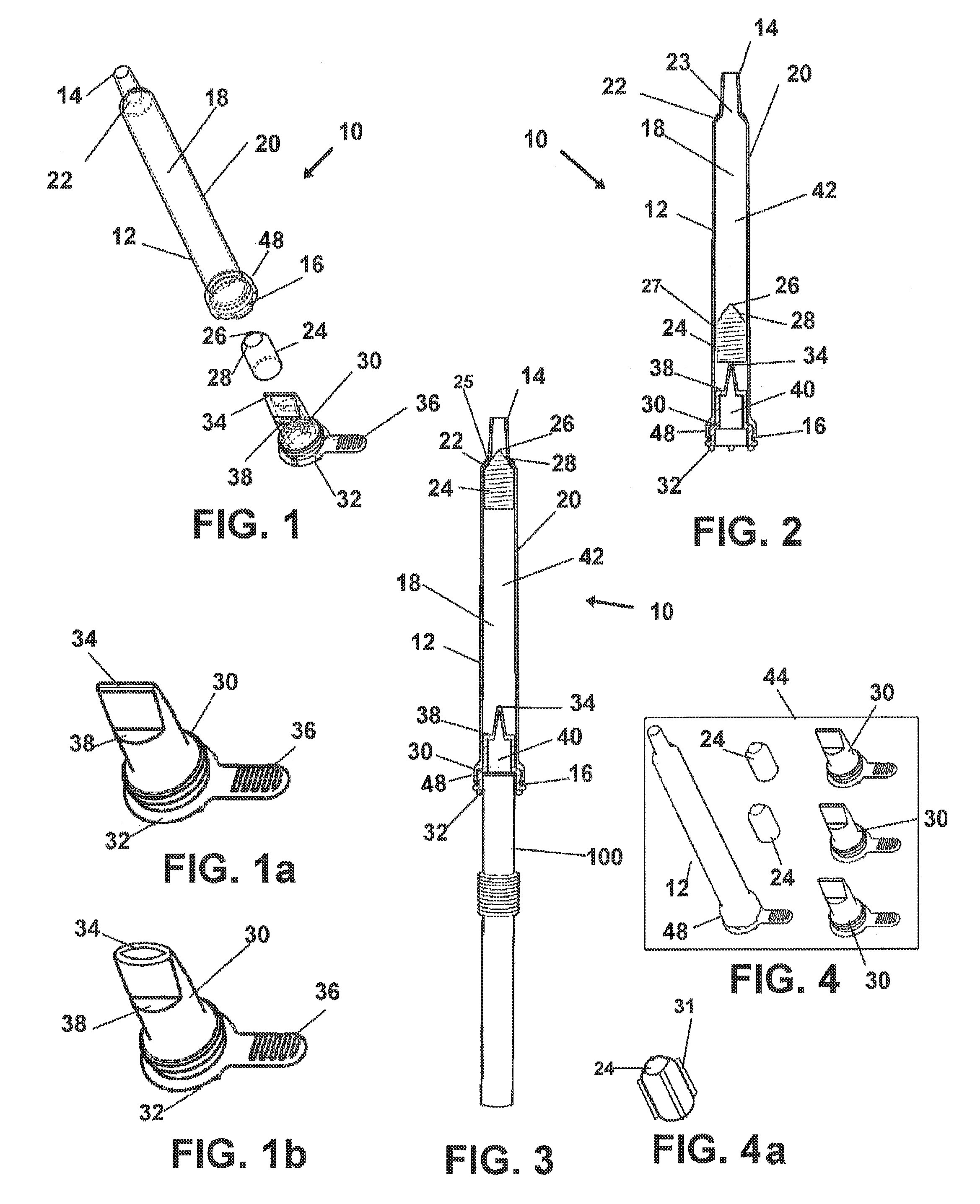Flow limiting drinking straw
a technology of drinking straws and limiting nozzles, which is applied in the field of drinking straws, can solve the problems of inability to control the mouth muscles, facial paralysis, and other motor function problems, and achieve the effects of fast fluid acceleration, rapid sealing of flow, and accurate determination
- Summary
- Abstract
- Description
- Claims
- Application Information
AI Technical Summary
Benefits of technology
Problems solved by technology
Method used
Image
Examples
Embodiment Construction
[0041]In this description, the directional prepositions of up, upwardly, down, downwardly, front, back, top, upper, bottom, lower, left, right and other such terms refer to the device as it is oriented and appears in the drawings and are used for convenience only; they are not intended to be limiting or to imply that the device has to be used or positioned in any particular orientation.
[0042]Now referring to drawings in FIGS. 1-4, wherein similar components are identified by like reference numerals, there is seen in FIG. 1 an exploded view of a first preferred mode of the straw device 10 herein. The device 10 is comprised generally of an elongated body 12 having apertures at proximal 14 and distal 16 ends communicating through an axial passage 42 communicating therebetween. The body 12 is preferably formed from conventional materials such as plastic, polymeric material, or metal, however can be formed from any material suitable for the intended purposes set forth in this disclosure....
PUM
 Login to View More
Login to View More Abstract
Description
Claims
Application Information
 Login to View More
Login to View More - R&D
- Intellectual Property
- Life Sciences
- Materials
- Tech Scout
- Unparalleled Data Quality
- Higher Quality Content
- 60% Fewer Hallucinations
Browse by: Latest US Patents, China's latest patents, Technical Efficacy Thesaurus, Application Domain, Technology Topic, Popular Technical Reports.
© 2025 PatSnap. All rights reserved.Legal|Privacy policy|Modern Slavery Act Transparency Statement|Sitemap|About US| Contact US: help@patsnap.com


